2 Education Statistics: An Overview
Education plays a pivotal role in socio-economic development of a nation. Education not only helps in nurturing and personality development of children but it also prepares them for their future roles as responsible and productive citizens of the country. After insertion of Article 25-A in the Constitution of Pakistan under the 18th Constitutional Amendment, free education has become a fundamental and legal right and provision of free and compulsory education to all children of age group 5-16 years has become the responsibility of the state. Education has been recognized and guaranteed as a basic human right by United Nations under Universal Declaration of Human Rights (1948). Government of Pakistan is fully cognizant about the importance of education, therefore each successive government has invested in education for numerous reasons i.e. human capital development, economic growth, human rights, promotion of good citizenship and to strengthen equal opportunity to its populace. In addition acquiring education is linked to poverty reduction as it imparts knowledge and skills to enhance the productivity of labour force. Therefore, provision and financing of education has remained the primary responsibility of the state of Pakistan. Historically, in Pakistan, commitment of the state to social service delivery, education in particular, has often competed with heavy debt repayments, large and ever-expanding defense budget needs and unproductive expenditures on running oversized public sector enterprises.
Pakistan’s schooling system consists of three main school types namely public sector schools, private sector schools and Deeni Madaris. These are further divided as public and private mainly due to curriculum and examination systems used in the schools and the language of instructions used by teachers.
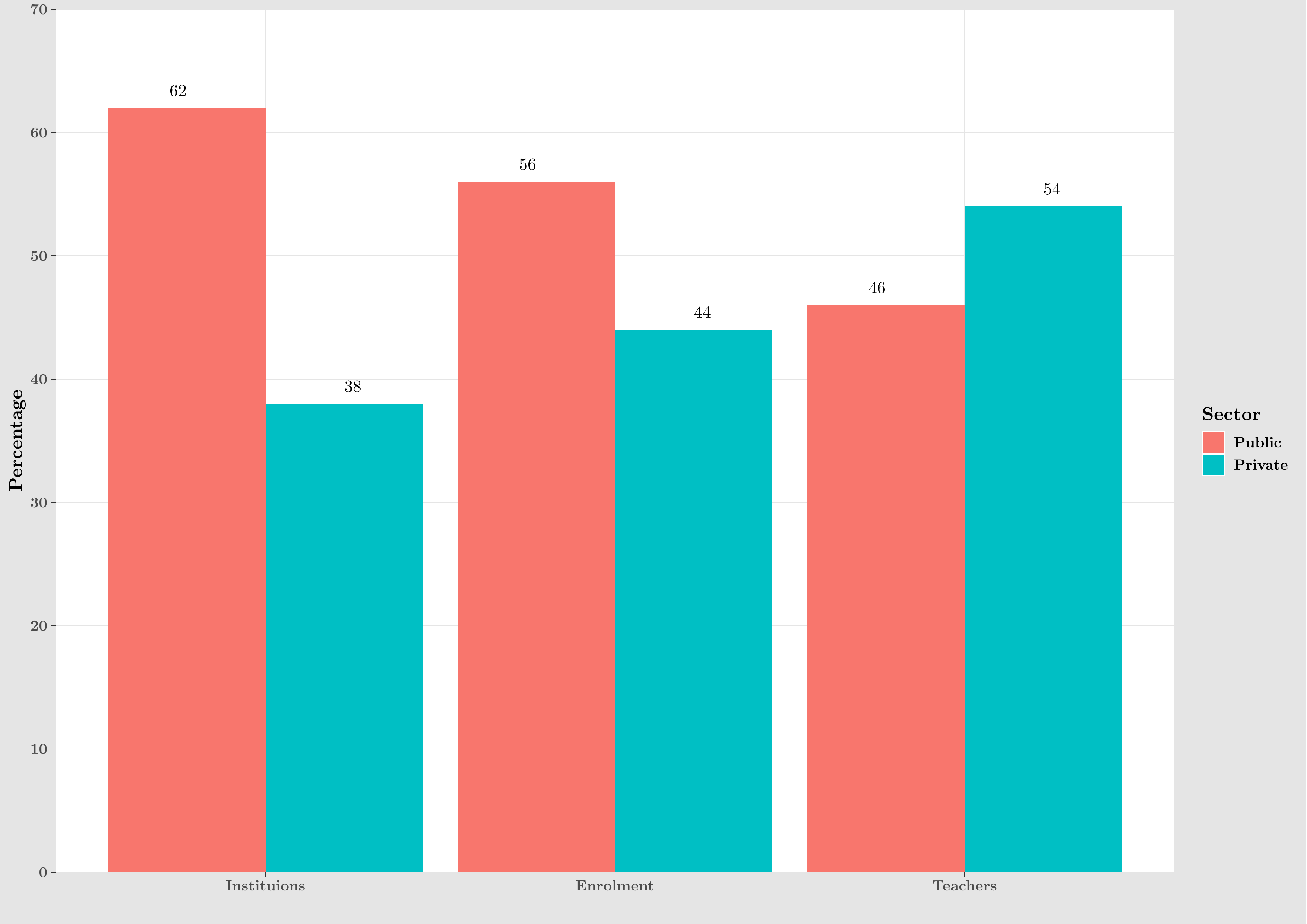
Figure 2.1: Percentage distribution of Institutions, Enrolment and Teachers by Sector 2017-18
The education system of Pakistan is comprised of 305,763 institutions accommodating 51,835,089 students and 2,073,433 teachers. The system is composed of 189,748 (62%) public institutions and 116,015 (38%) private institutions, which also include 31,115 Deeni Madaris.
The public sector is serving 29.24 million (56%) students to complete their education while the remaining 22.70 million (44%) are enrolled in the private sector of education. About 38 percent private educational institutions are facilitating 44 percent of students showing a slightly higher per-institution enrolment ratio in the private sector compared to the public sector. In the last decade due to encouragement of the government there is a gradual growth of opening of educational institutions in the private sector. In terms of teaching staff, 46 percent of teachers work in the public sector institutions, compared to 54 percent in the private sector (including 8% teachers serving in the Deeni Madaris) (Fig. 2.1).
Education is seen as a major force for eliminating gender inequities within the society, though addressing inequalities within the education system itself is a tremendous challenge. Ratio of male teachers is higher in public sector whereas ratio of female teachers is higher in private sector. Gender composition of the enrolled students is 56 percent males compared to 44 percent female students, whereas there are 40 percent male and 60 percent female teachers imparting education upto the degree colleges in the year 2017-18 (Fig. 2.2).
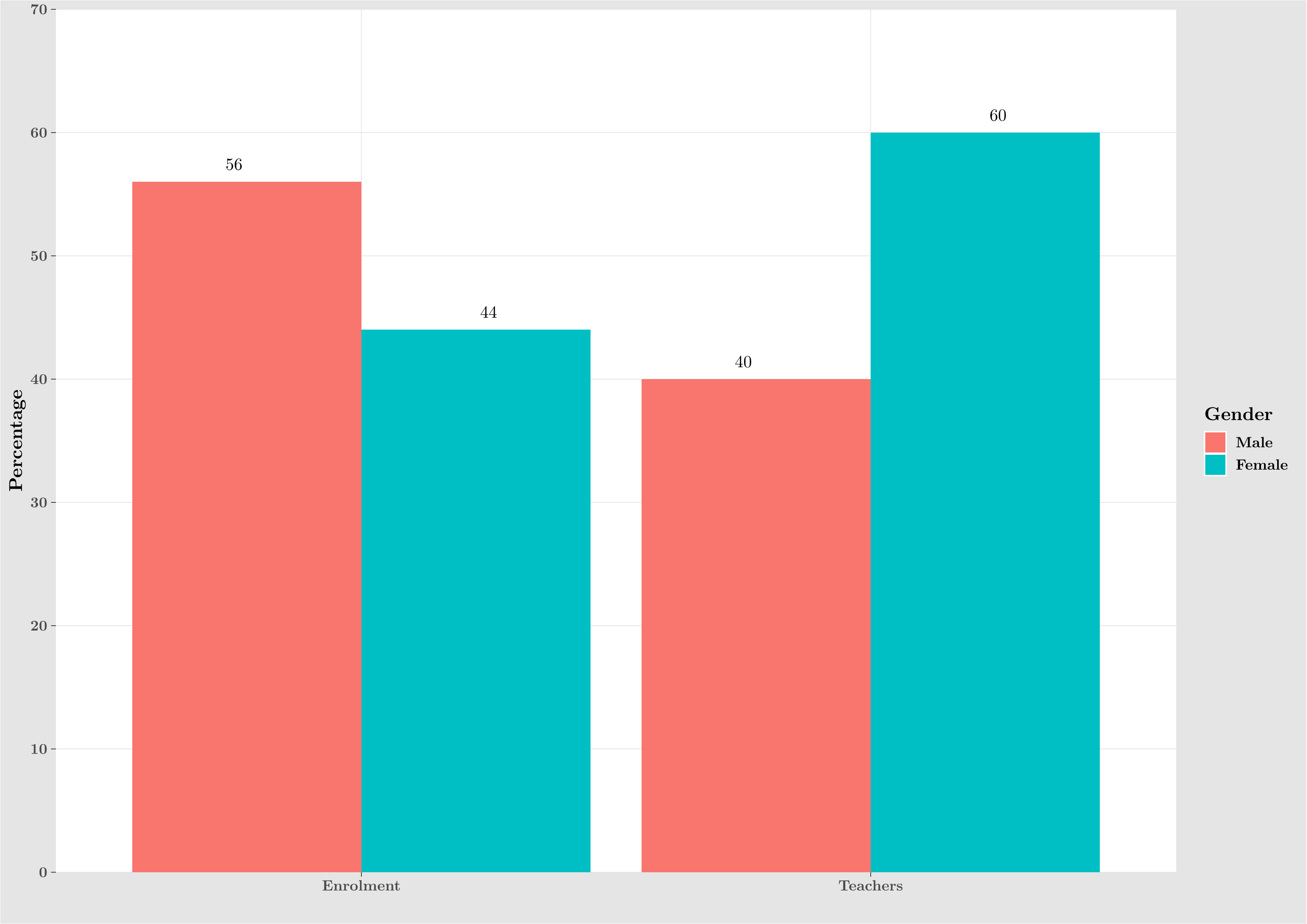
Figure 2.2: Percentage distribution of Enrolment and Teachers by Gender 2017-18
Percentage distribution of institutions, enrolment and number of teachers upto the degree colleges for provinces/regions by sector is given in the Fig. 2.3. At the national level the percentage difference in the public and private sectors is 38, 26 and 4 percent for institutions, enrolment & teachers respectively. This disparity is maximum (86%) in Balochistan and GB for institutional divide in favour of public sector 64 and 58 percent for FATA and Balochistan for enrolment divide and 68 and 60 percent again for FATA and Balochistan for teacher divide. It may also be noticed that in ICT private sector has sizeable edge in favour of all three determinants. In GB there were two percent more teachers in private sector. In AJK there were more percentage of institutions, enrolment and teachers in the private sector.
Percentage distribution of enrolment and teachers for provinces/regions by gender is given in the Fig. 2.4. It is observed that enrolment percentages are higher by twelve percent for males as compared to females at the national level. This difference is two percent for ICT, about 20 percent in Sindh, KP and Balochistan and maximum of 38 percent in FATA. There are about 20 percent more female teachers imparting education to students upto the degree colleges. It seems that this domination is due to the private sector where comparatively more female teachers are hired as compared to male teachers for lower classes. In Punjab, Sindh, AJK, and ICT there are 40, 6, 6 and 52 percent more female teachers as compared to male teachers respectively.
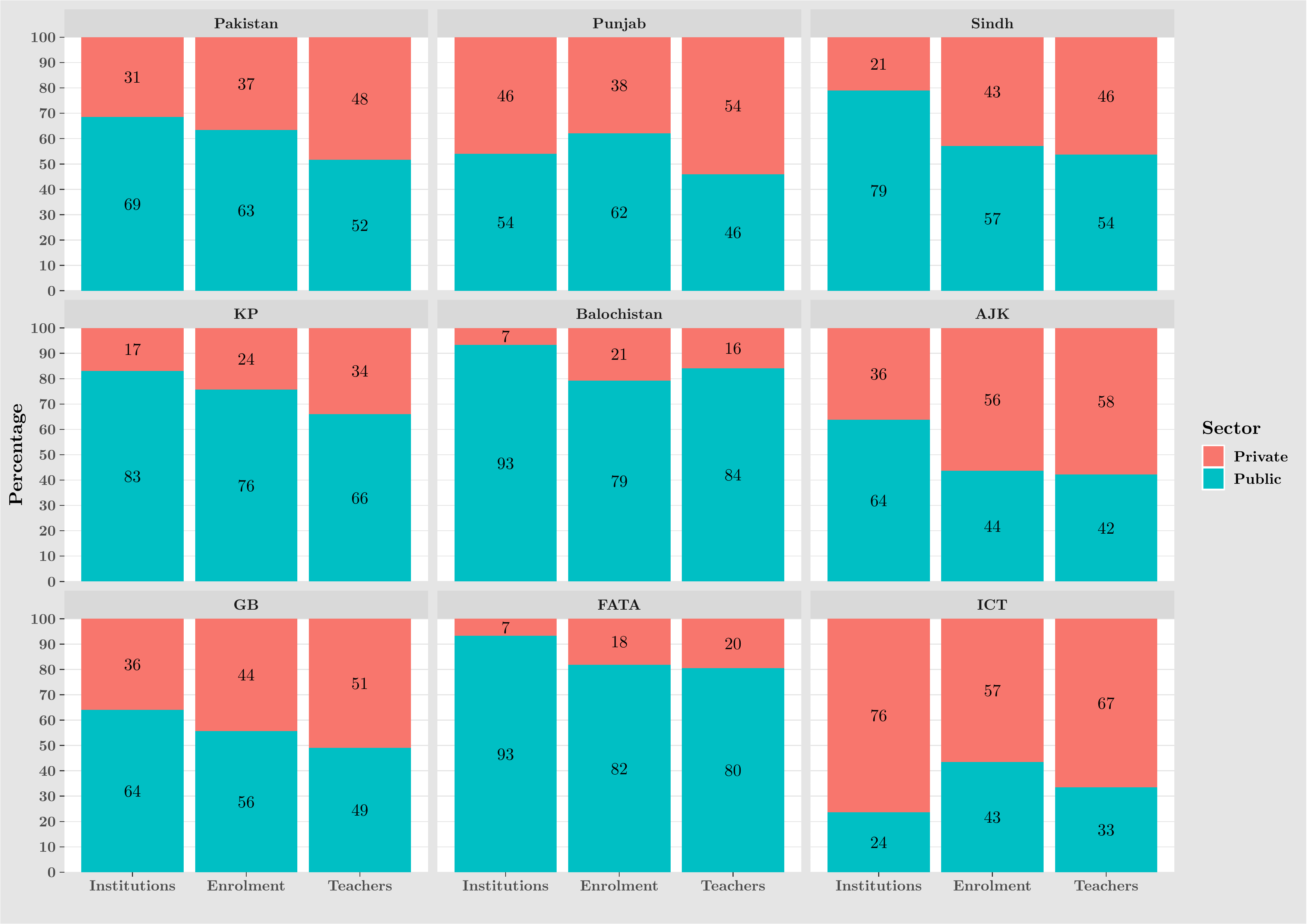
Figure 2.3: Percentage distribution of Institutions, Enrolment and Teachers by Sector and Provinces/Regions 2017-18
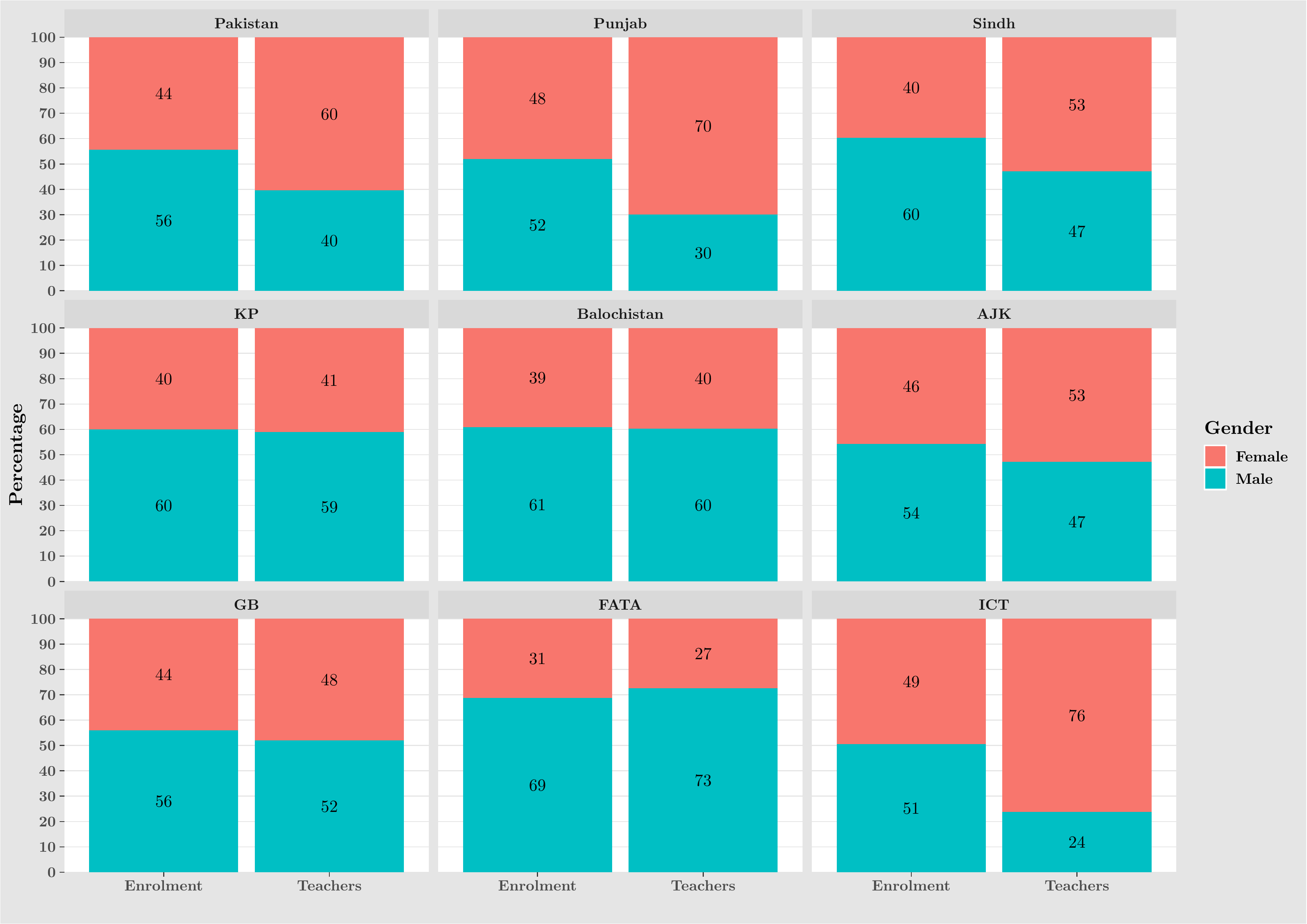
Figure 2.4: Percentage distribution of Enrolment and Teachers by Gender and Provinces/Regions 2017-18
2.1 Education Statistics by Categories of Institutions
The educational institutions in the country are divided into following categories:
- Pre-Primary
- Primary
- Middle
- High
- Higher Secondary
- Inter-Colleges
- Degree Colleges
- Universities
- Technical & Vocational Institutions
- Teacher Training Institutions
- Non-Formal Basic Education
- Education Foundations
- Deeni Madaris
The following sections, present an overview of the country’s education system in terms of these categories of educational institutions. These broad categories will be further analyzed on the basis of sector, gender and education level. From Pre-Primary to university level this can be broadly categorized into three levels, namely
- School Education (Pre-Primary - Class 12)
- College Education (Degree Colleges, Class 13-14)
- University Education
The formal education system comprises of 223,116 institutions out of which 137,460 (61%), 46,665 (21%), 31,392 (14%), 5,754 (3%) and 1,845 (1%) represent Primary (including pre-primary), middle, high, higher secondary and degree colleges/universities respectively. The percentage distribution of educational institutions upto higher secondary/inter college level is shown in Fig. 2.5 which gives public/private sector divide for the given categories of education at national as well as provinces/regions level.
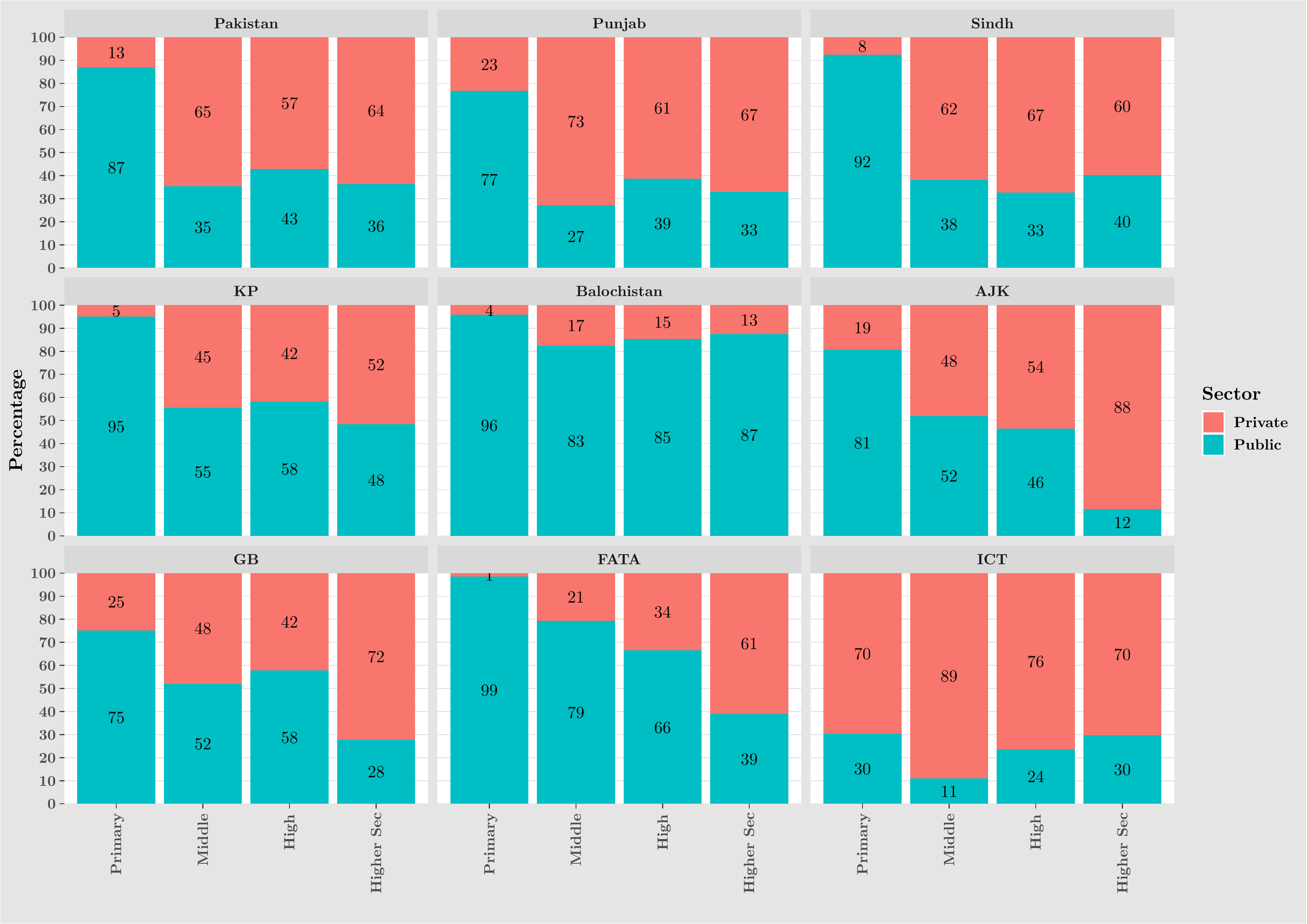
Figure 2.5: Percentage distribution of Institutions by Sector and Provinces/Regions 2017-18
It is observed that at primary level 87 percent institutions are in the public sector, while only 13 percent are in the private sector. For the middle, high and higher secondary level private sector has more institutions as compared to public sector. Provinces/Regions portray similar picture at primary level except in ICT where there are more primary schools in private sector. Disparities can be observed at different stages which must be taken into account by the policy planners for bringing correction in the institutional divide.
2.1.1 School Education
Separate pre-primary institutions don’t exist in the public sector of Pakistan, however, admissions in pre-primary are given in public sector schools. The total enrolment at pre-primary stage is 9.489 million. Public sector has an enrolment of 4.830 million (51%), whereas the private sector has 4.659 million (49%).
There are a total of 137,079 primary schools in the country out of these 119,202 (87%) are in the public sector, whereas, 17,877 (13%) are in the private sector. The primary stage of education in Pakistan enrols 18.664 million students. Out of which 12.065 million (65%) are in public sector and 6.599 million (35%) are in private sector (Fig. 2.5).
Out of the total enrolment at primary stage, 10.424 million (56%) are male and 8.239 million (44%) are females. In the provinces of Sindh, KP and Balochistan and FATA region more than ninety percent institutions at the primary level were in the public sector and less than ten percent in the private sector. ICT has more than twice schools at the primary level in the private sector as compared to the public sector (Fig. 2.6).
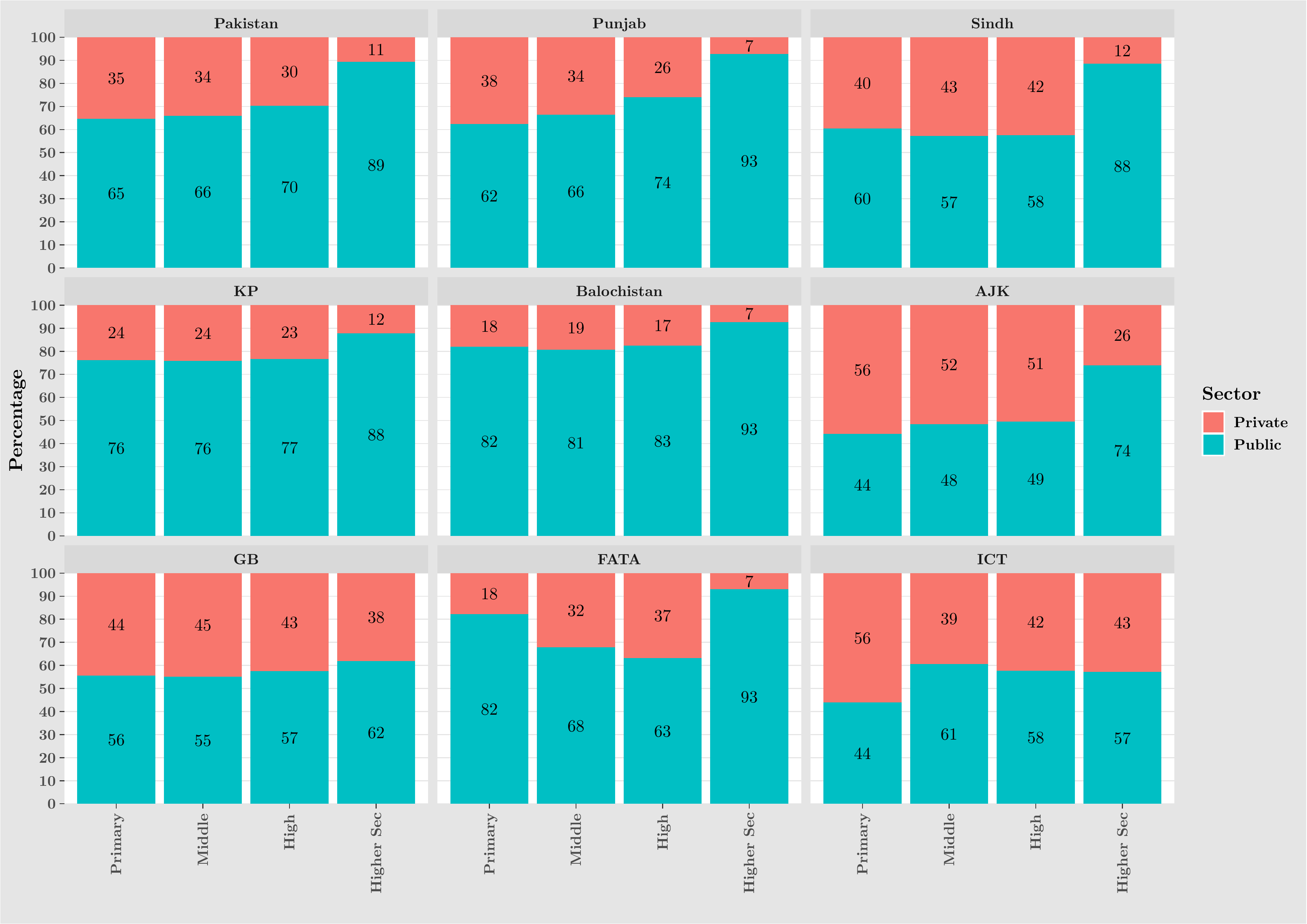
Figure 2.6: Percentage distribution of Enrolment by Sector and Provinces/Regions 2017-18
There is more enrolment in public sector at primary level in all provinces/regions except AJK and ICT where the percentage is (44:56) for public vs private for both regions.
Since there is no separate allocation of teachers to the pre-primary level in the public sector, their number is not reported. Whereas the private sector has separate teachers for pre-primary sector and the reported number of teachers is 2,117.
At national level, there are 46,665 middle schools of which 16,550 (35%) are in public sector, whereas 30,115 (65%) are in private sector. In Punjab, Sindh and ICT there are more schools in private sector as compared to public sector (Fig. 2.5).
A total of 6.422 million students are enrolled in middle level of education i.e., they are studying in grades VI-VIII. Out of these 4.239 million (66%) are in public sector, whereas, 2.184 million (34%) are in private sector. This pattern is also followed in all provinces/regions except AJK where there are more middle schools in private sector (Fig. 2.6).
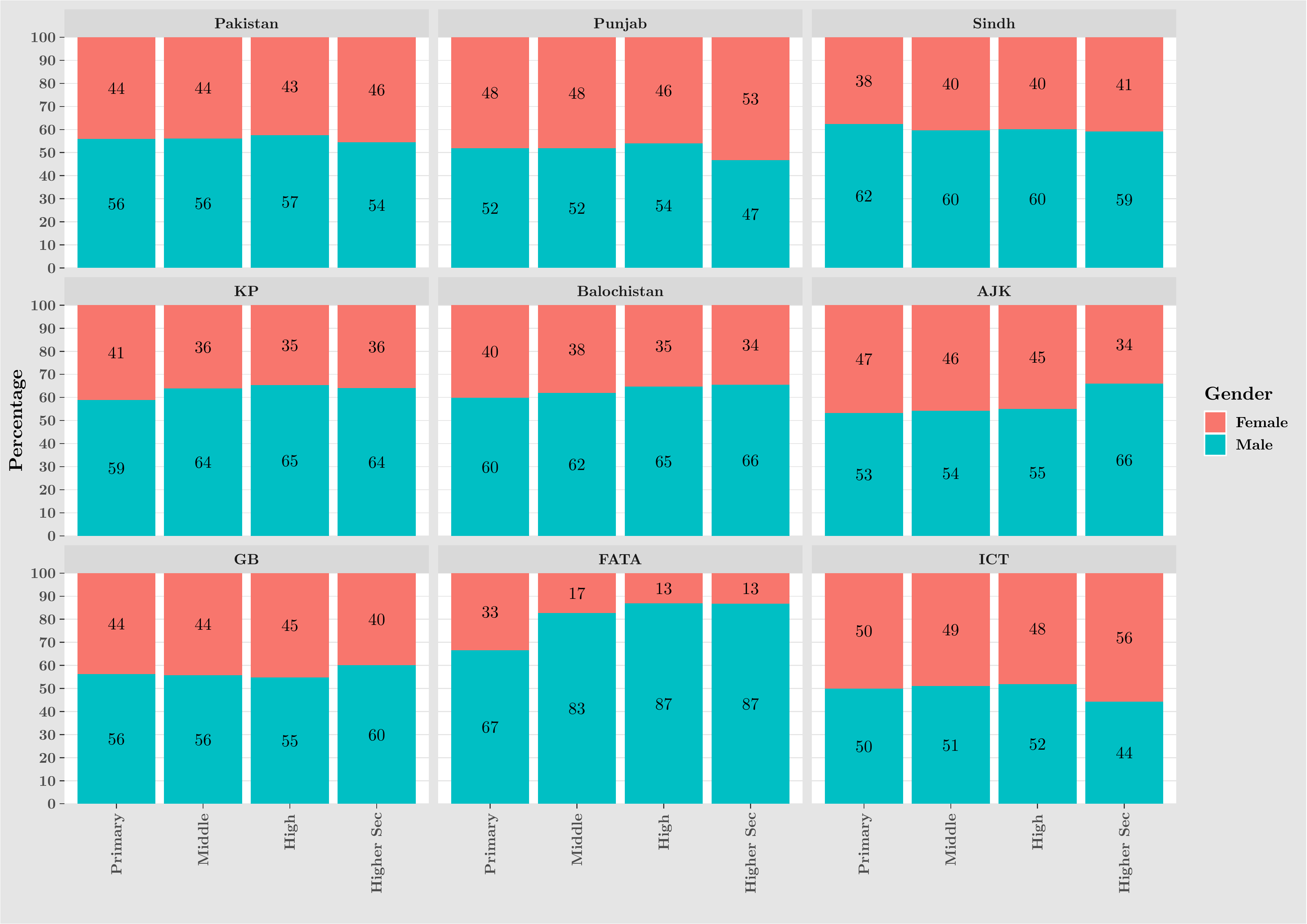
Figure 2.7: Percentage distribution of Enrolment by Gender and Provinces/Regions 2017-18
The enrolment distribution of male and female at middle level is 3.601 (56%) and 2.821 (44%) million respectively. The pattern is followed in the provinces/regions with disparity in FATA and KP (Fig. 2.7).
The total number of teachers at middle level is 448,074 out of which 140,946 (31%) teachers are performing their duties in public sector while the remaining 307,128 (69%) are serving in the private schools (Fig. 2.8). There are 129,756 (29%) male and 325,689 (71%) female teachers, in middle schools. This pattern of more female teachers is observed for Punjab, Sindh, ICT and AJK while there are more teachers in other provinces/regions at middle school level (Fig. 2.9).
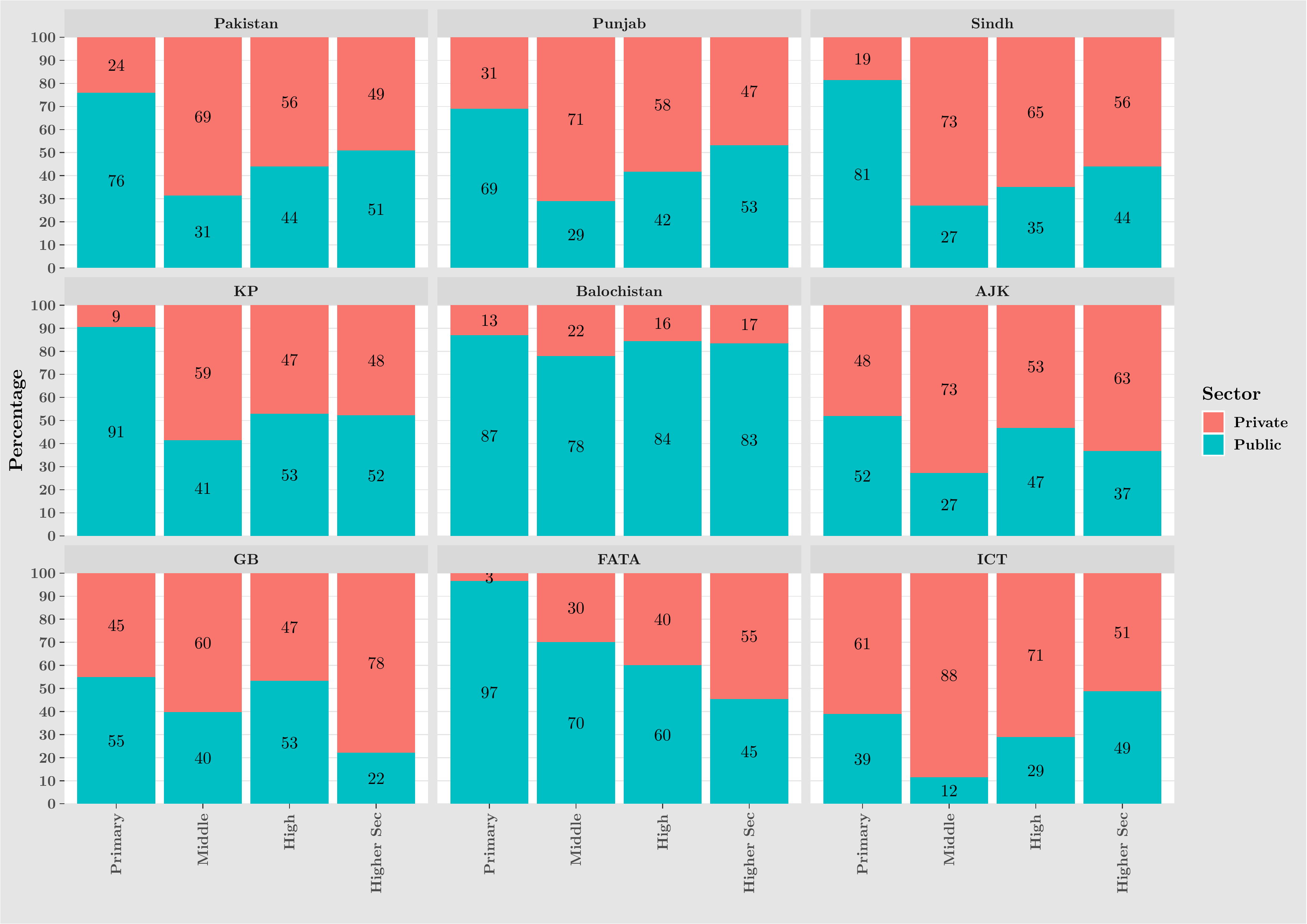
Figure 2.8: Percentage distribution of Teachers by Sector and Provinces/Regions 2017-18
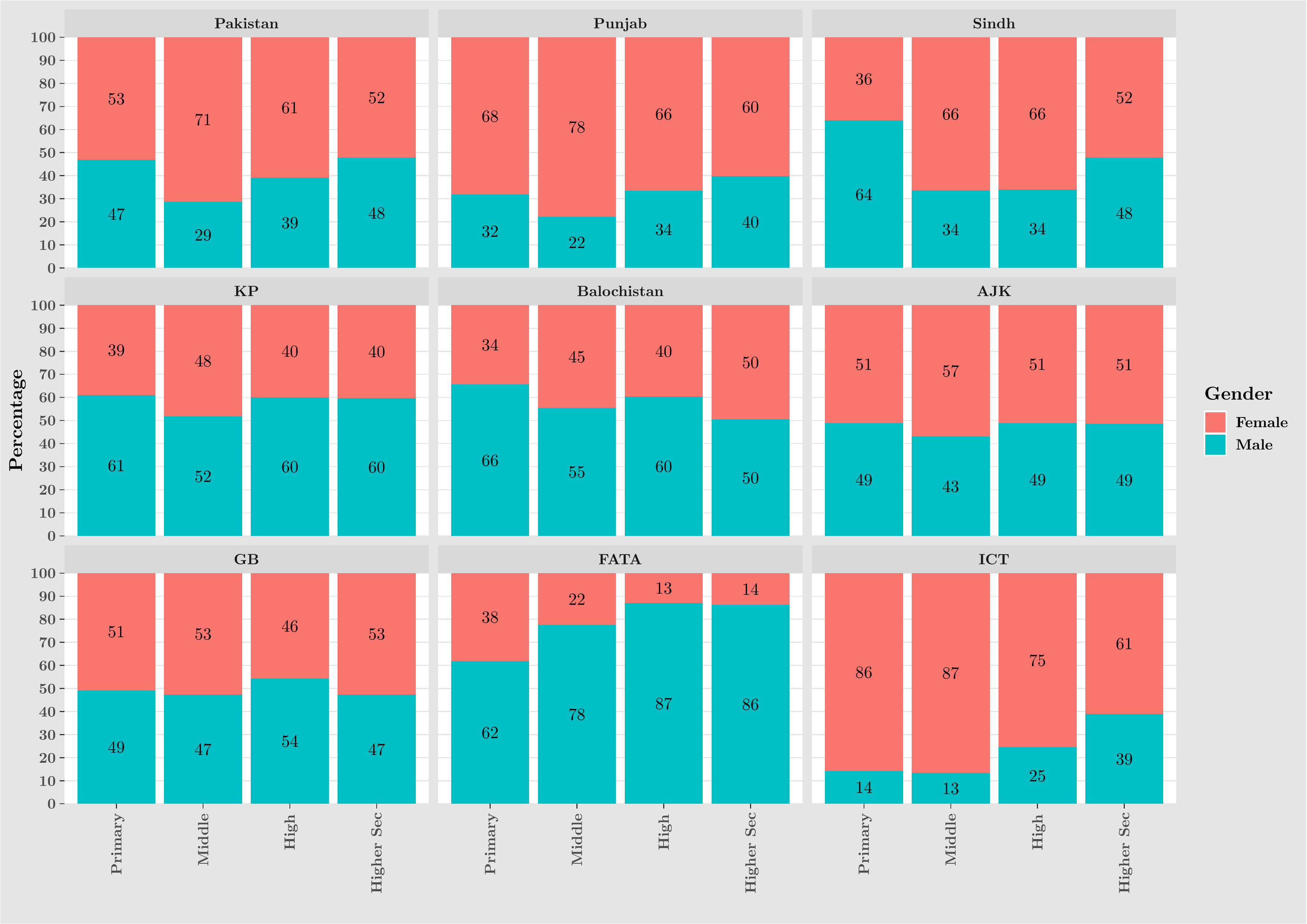
Figure 2.9: Percentage distribution of Teachers by Gender and Provinces/Regions 2017-18
There are a total of 31,392 high schools in the country. Out of these 13,448 (43%) schools are in the public sector, whereas 17,944 (57%) are in the private sector (Fig. 2.5). The total enrolment at high school stage is 3.349 million, of which 2.353 million (70%) is in public sector, whereas, 0.996 million (30%) is in private sector (Fig. 2.6). The total enrolment of males at high schools is 1.925 million (56%), whereas, the female enrolment is 1.424 million (44%). The total teachers at high school level are 563,302, out of which 247,447 (44%) are in public and 315,855 (56%) are in private sector (Fig. 2.8). There are 218,064 (39%) male and 342,578 (61%) female teachers at this level (Fig. 2.9).
There are 5,754 higher secondary schools/inter colleges in education system of Pakistan. The share of these institutions in overall education system of the country is about three percent, out of which one-third are in public sector. The total enrolment in higher secondary schools is 1.682 million out of which 89% is in public sector schools (Fig. 2.6). There are 0.921 (54%) males and 0.761 (46%) million female students (Fig. 2.7). There are 123,154 teachers working in higher secondary schools/inter colleges out of which 62,739 (51%) are in public sector (Fig. 2.8). There are 48 percent male and 52 percent female teachers teaching higher secondary/inter college level (Fig. 2.9).
A pictorial comparison of percentage distribution of number of institutions, enrolment and teachers by level of education is given in Fig 2.10.
At primary level schooling there are 62 percent of institutions, with 67 percent of enrolment and having 28 percent of teachers of the entire education system in Pakistan. The point of concern for policy makers is the low percentage of teachers available for primary education when minor children need more attention from their teachers.
The public sector portrays 78 percent institutions, with 63 percent enrolment and 41 percent teachers at primary which is better than the overall picture. However the private sector contributing with 26 percent institutions, and teachers 14 percent educating much higher percentage of students (75%) at primary level. The governing bodies of the private sector institutions need to take corrective measures to improve the quality of education at the very basic tier of the education system.
At middle level the institution, enrolment and teacher percentage triplet is 21:15:26 which is more balanced as compared to the primary level. The private sector triplet is (43:14:37) as compared to public sector (11:16:16).
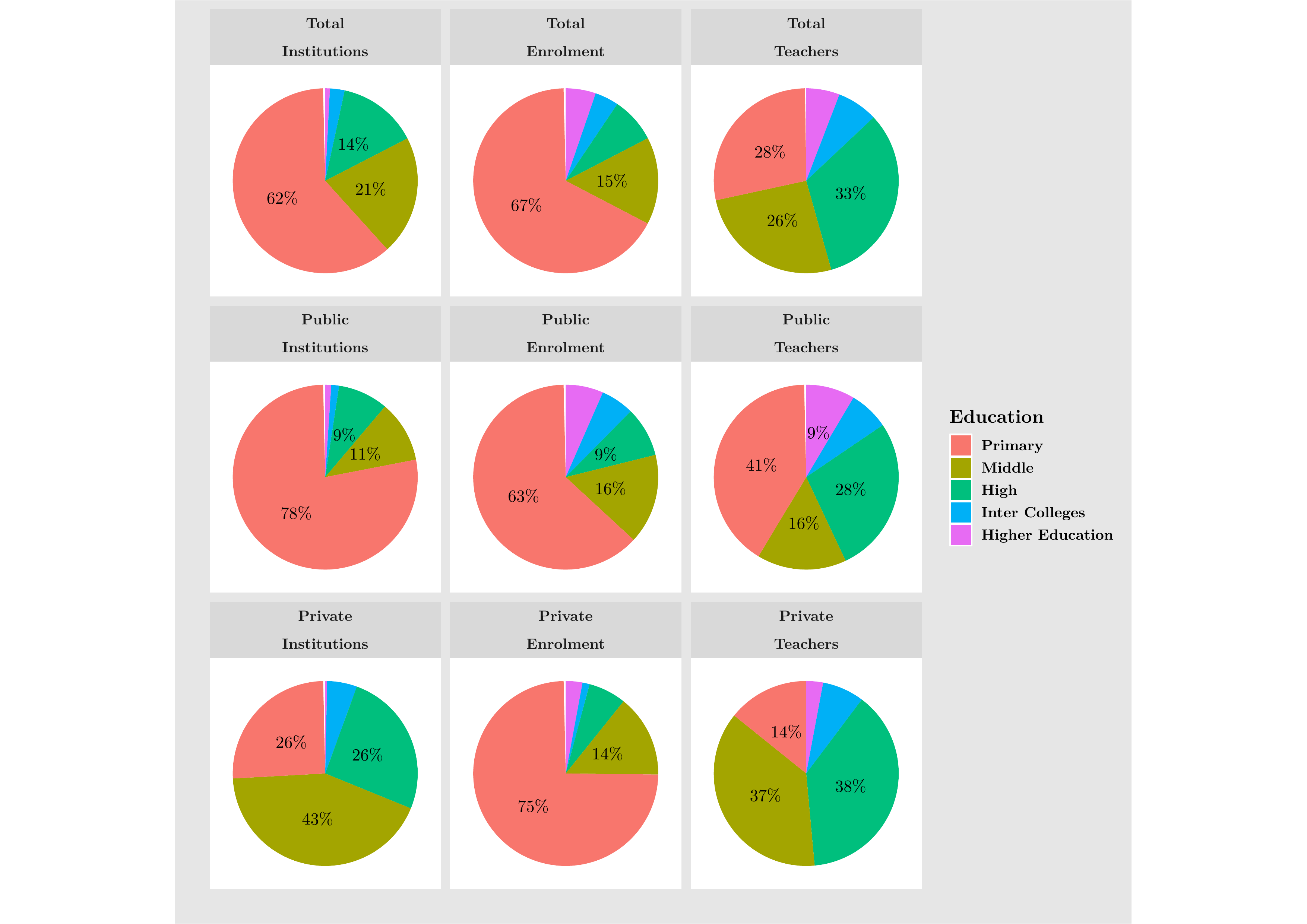
Figure 2.10: Percentage distribution of Institutions, Enrolment and Teachers by Education level and Sector 2017-18
At high schools level the ratio percent triplet is 14:8:33 for percentage of institutions, enrolment and teachers at the national level. In the public sector the ratio percent triplet is 9:9:28 and for private sector it is 26:7:38. The number of institutions and teachers in the public sector are lesser than institutions in private sector but having small enrolment percentage and high teacher percentage.
At inter-college and higher education level the percentages are too small to be displayed in the pie charts as the slices are very small. The overall ratio percent triplet for inter college level is 3:4:7 while its public/private segregation is 1:6:7 for public and 5:1:7 for private sector for institutions, enrolment and teachers respectively. For higher education (Degree College and University both) the overall ratio percent triplet is 1.1:6:5 for institutions, enrolment and teachers respectively.
2.1.2 Degree Colleges
There are 1,659 degree colleges of which 1,498 (90%) are in public sector, whereas 161 (10%) are in private sector (Fig. 2.12). The total enrolment at degree college stage i.e. in grades 13 and 14, is 0.605 million. Out of these students 0.473 million (79%) are completing their degrees from public sector, whereas, 0.132 million (21%) students are in private sector (Fig. 2.13).
The total male enrolment at degree college stage is 0.310 million (51%), whereas, enrolment for female is 0.295 million (49%) (Fig. 2.11). The total teachers at degree college level are 41,233 out of which 38,853 (94%) are in public and 2,380 (6%) are in private sector (Fig. 2.14). There are 23,430 (57%) male and 17,803 (43%) female teachers in the degree colleges of the country (Fig. 2.15).
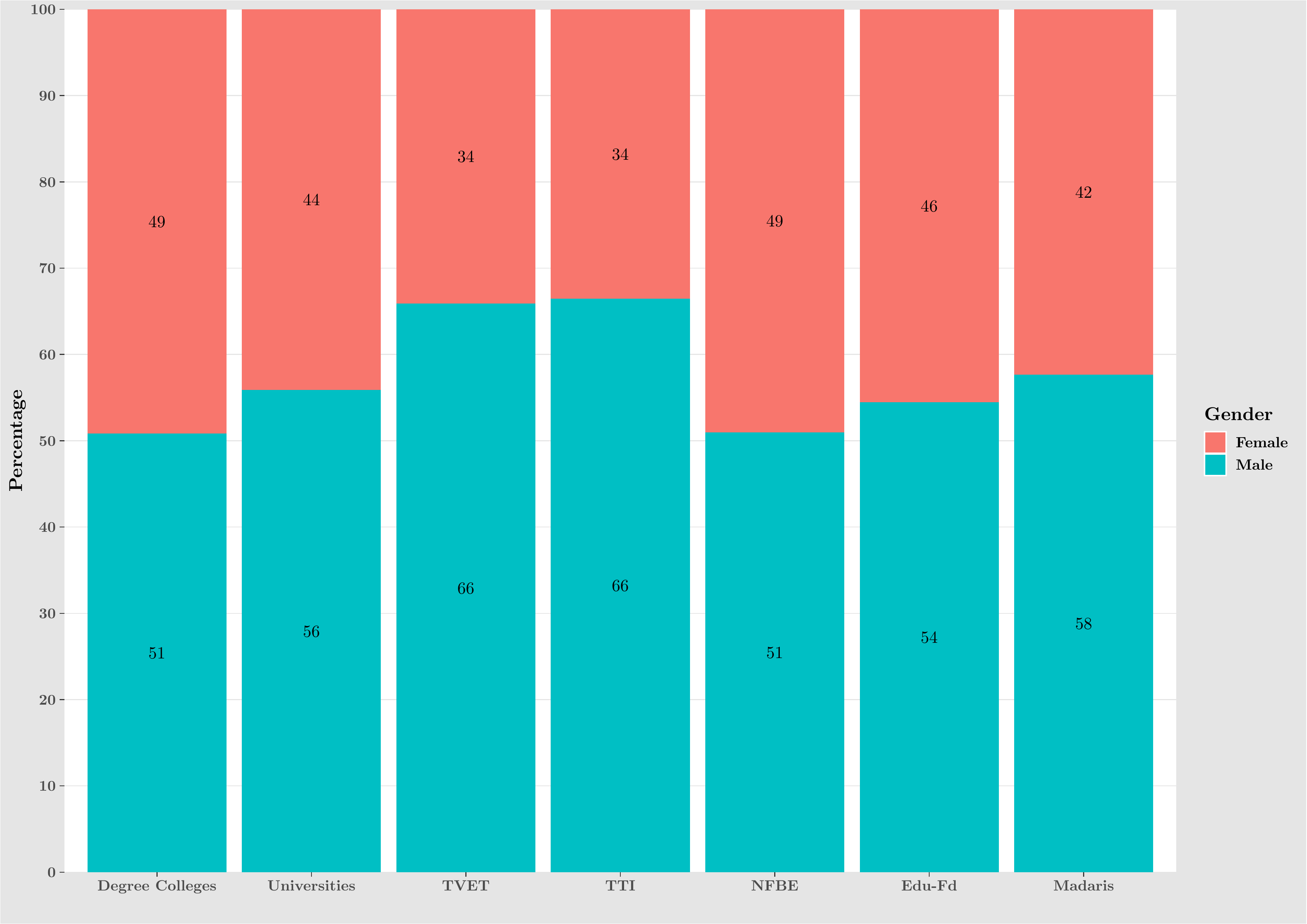
Figure 2.11: Percentage distribution of Enrolment in Institutions of higher, technical, non-formal, education foundation and Deeni Madaris education by Gender 2017-18
2.2 Universities & Degree Awarding Institutions
There are a total of 186 universities & degree awarding institutions catering to the needs of higher degree students in both public and private sectors of education. Out of these universities, 111 (60%) are working under umbrella of public sector, whereas 75 (40%) are working in the private sector.
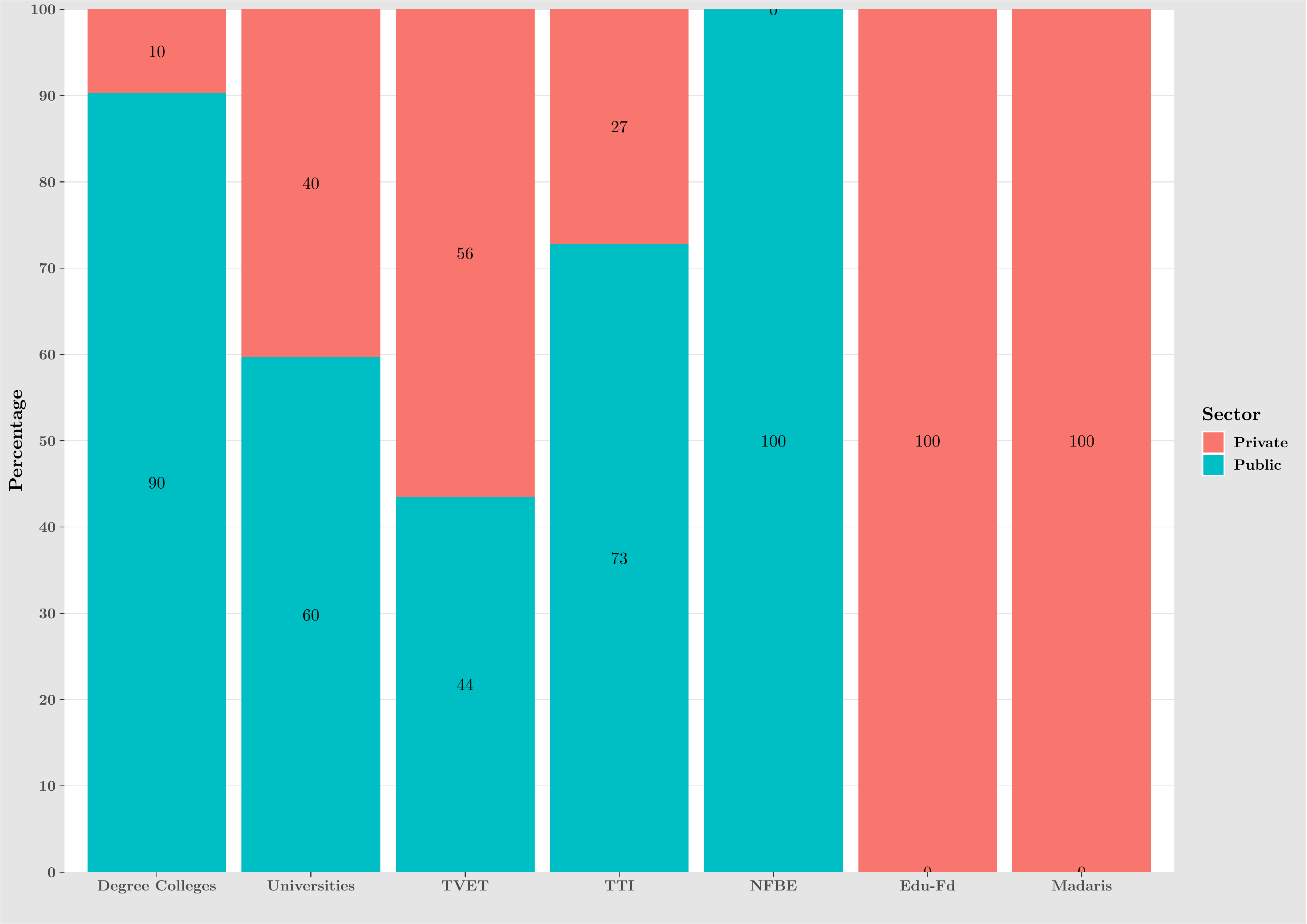
Figure 2.12: Percentage distribution of Institutions of higher, technical, non-formal, education foundation and Deeni Madaris education by Sector 2017-18
The total enrolment in the universities and degree awarding institutions is 1.576 million. Out of this 1.266 million (80%) students are enrolled in public sector whereas, 0.309 million (20%) students are studying in private universities and degree awarding institutions (Fig. 2.13). In the overall national scenario only four percent students have access to university education. The total male enrolment in the universities is 0.881 million (56%), whereas, the female enrolment is 0.695 million (44%) (Fig. 2.11). There are 56,885 teachers imparting higher education to the students in these universities. Universities in the public sector employ 38,011 (67%) teachers while those in the private sector have 18,874 (33%) teachers (Fig. 2.14).
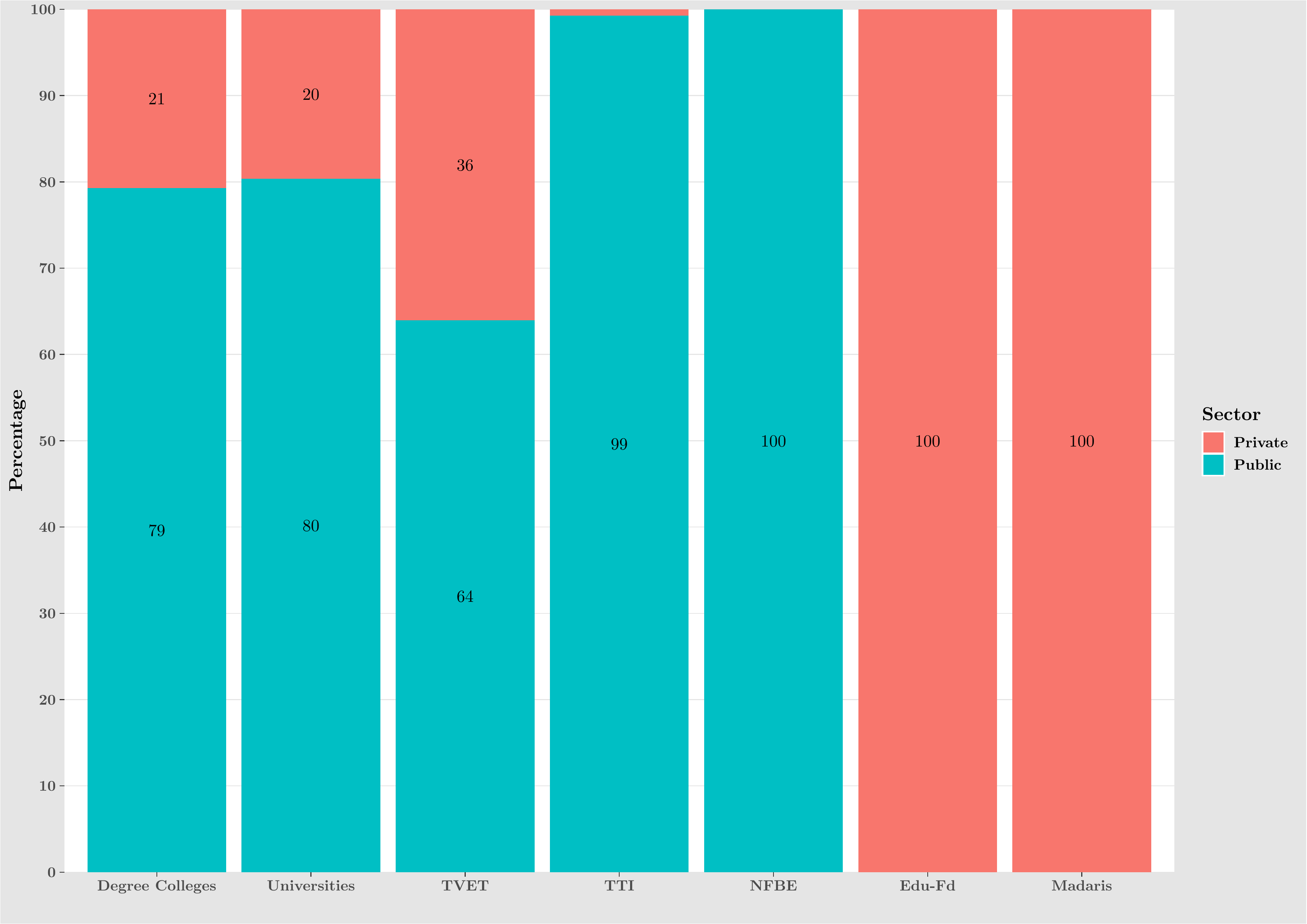
Figure 2.13: Percentage distribution of Enrolment in Institutions of higher, technical, non-formal and Deeni Madaris education by Sector 2017-18
2.2.1 Non-Formal Basic Education
Non-Formal Basic Education (NFBE) comprises of a number of departments like Basic Education Community Schools (BECS), National Commission for Human Development (NCHD), Punjab Literacy & NFBE Department, Sindh Education and Literacy Department (SELD), Sindh Education Foundation (SEF), Balochistan Literacy and NFE Department and Non Governmental Organizations (NGOs). This segment has been a significant feature of policy debates around education in many countries for three decades. It has drawn attention to the importance and potential of education, learning and training that takes place outside recognized educational institutions.
According to Pakistan Education Statistics Report 2016-17, 22.8 million children (44%) between the ages of 5 and 16 were out of schools in Pakistan, though the number has reduced to 17.8 million this year. It is important to note that out of school children of 5-9 years are only 22 percent whereas remaining cohort of 10-16 years of age constitutes 78 percent. This age cohort signifies a huge range of diversity and complexity with reference to their education. Most of them have become overage owing to missing early years of schooling or drop out from schools before completing primary or elementary education cycle. Children belonging to this particular age cohort have to face difficulty in readmission in schools owing to formal school policy. Therefore, they necessarily require a second chance to educate themselves and re-enter the educational mainstream to complete basic education and continue their education from sixth grade or through distance learning from AIOU.
Under second chance education phenomenon NFBE provides options in the form of an alternative education model that are flexible, fast track and equivalent education. Such models are known as Accelerated Education Programs (AEPs)/Accelerated Learning Programs (ALPs). These model serve the learning needs of a specific group of out-of-school children especially those who missed their early school years or dropped out before completing primary or elementary education cycle.
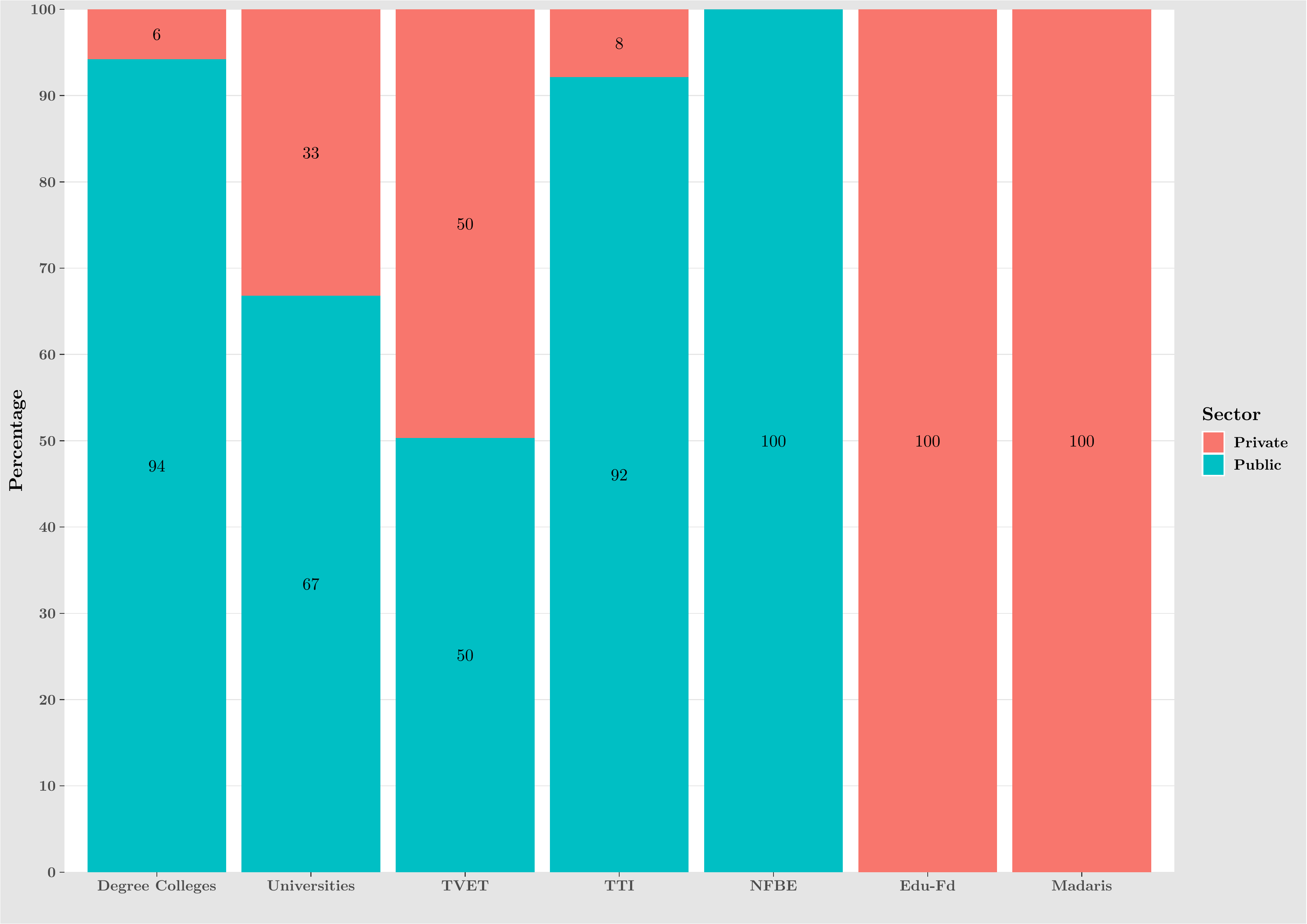
Figure 2.14: Percentage distribution of Teachers in Institutions of higher, technical, non-formal and Deeni Madaris education by Sector 2017-18
The NFBE work under AEP/ALP model which is one teacher and one room, where the space is generally provided by the community and is highly inclusive in nature. It addresses diversity by including the excluded especially refugees, IDPs and those with minor or moderate learning difficulties through multi-grade, multi-age, and multi-language teaching and learning approaches. Teachers’ professional qualification is low, but their capacity is enhanced through extensive and enabling in-service Continuous Professional Development (CDP) methods. Class timings are flexible and are offered as per the availability of learners in condensed and accelerated time frame. The primary model offers primary cycle in 32-36 months while elementary model offers this cycle in 18-24 months including selected skill courses. The assessment and examination is carried out through authorized assessment bodies for equivalence and valid certificates, which ensure continuing education and mainstreaming. This model is highly participative and involves community in all its operations for sustainability and lasting impact. Considering the current circumstances, this model is suitable for being in-expensive. The cost per child per month ranges from Rs.300-500. Therefore, this model can be adopted to address the issue of out-of-school children with minimum financial inputs.
There are 35,059 institutions imparting non-formal basic education in the country in the public sector. Students enrolled in NFBE are 1.425 million with 0.727 million (54%) and 0.699 million (46%) males and females respectively. There are 33,990 serving teachers, out of which 34 percent are male and 66 percent female teachers (Fig. 2.15).
2.2.2 Technical & Vocational Education Training Institutions
Technical and Vocational Education & Training (TVET) is basically the skill-development of workforce working in the different sectors of economy of a country. It is also defined as marketable and economically relevant education for people. Technical Education refers to post-secondary courses of study and practical training aimed at preparation of technicians to work as supervisory staff. Vocational Training, on the other hand, refers to the lower-level education and training for the preparation of skilled or semi-skilled workers in various trades, but it does not enhance their level with respect to general education. There is a fresh awareness among policy makers in developing countries and the international community of the critical role that TVET can play in national development. One of the most important features of TVET is its orientation towards the world of work and the emphasis of the curriculum on the acquisition of employable skills. TVET delivery systems are therefore well placed to train the skilled and entrepreneurial workforce that the country needs to create wealth and alleviate poverty. TVET is important because TVET institutions can respond to the different training needs of learners from different socio-economic and academic backgrounds, and prepare them for gainful employment and sustainable livelihoods. The youth, the poor and the vulnerable of society can therefore directly benefit from TVET programs. In a developing country like Pakistan, it is extremely important to realize that large number of young people are outside the formal school system, requiring the integration of non-formal learning methodologies and literacy programs into national education system. To revitalize, modernize and harmonize TVET in order to transform it into a mainstream activity for the youth development and human capacity building in Pakistan the present Government has included skills development as one of the priority areas in its education policy.
In Pakistan, there are 3,740 technical and vocational institutions, of which 1,627 (44%) are in public sector, whereas 2,113 (56%) are in private sector (Fig. 2.12). This is roughly 1.23 percent in the overall institutional scenario of the country. It needs much more focus of the government as this is an era of skill development which can contribute much more in the country’s economic development.
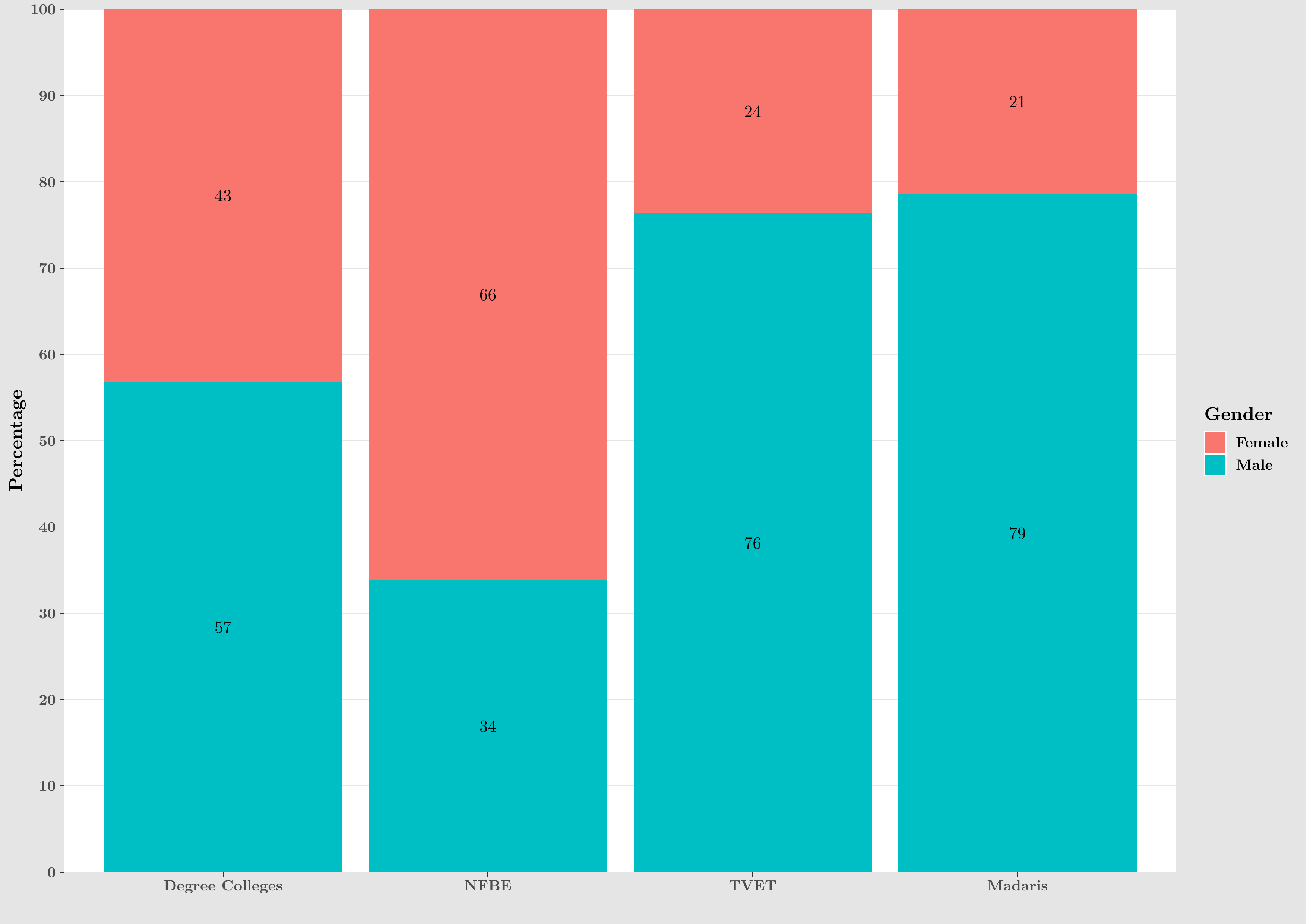
Figure 2.15: Percentage distribution of Teachers in Institutions of higher, technical, non-formal and Deeni Madaris education by Gender 2017-18
The total enrolment in the technical and vocational institutions is 0.433 million, of which 0.277 million (64%) is in the public sector, whereas, 0.156 million (36%) is in the private sector (Fig. 2.13). Less than one percent students are enrolled in TVETT institutions in the overall student enrolment at the national level which is quite low percentage for skill development education. This area needs much better focus of the government.
It is also observed that 44 percent public technical & vocational institutions are serving 64 percent of total technical & vocational enrolment, while 56 percent private institutions are serving 36 percent of the private sector enrolment in the country. The total male enrolment in the technical and vocational institutions is 0.225 million (65%), whereas, the female enrolment is 0.119 million (35%). The total teachers in the technical and vocational institutions are 18,207, out of those 9,164 (50%) are in public and 9,043 (50%) are in private sector (Fig. 2.14). There are 13,903 (76%) male teachers and 4,304 (24%) female teachers (Fig. 2.15).
2.2.3 Teachers Training Institutions
There are 217 teachers training institutions, of which 158 (73%) are in the public sector and only 59 (27%) are in the private sector (Fig. 2.12). The total enrolment at teachers training institutions is 0.724 million, of which 0.719 million (99%) are in public sector, whereas, 0.005 million (01%) are in private sector (Fig. 2.13). The total male enrolment in the teachers training institutions is 0.481 million (66%), whereas, the female enrolment is 0.243 million (34%) (Fig. 2.11). The total teachers in the teachers training institutions are 3,791, out of which 3,493 (92%) are in public and 298 (8%) are in private sector (Fig. 2.14).
2.2.4 Education Foundations
There are five Education Foundations working in the country in the private sector. They are National Education Foundation (NEF), Punjab Education Foundation (PEF), Sindh Education Foundation (SEF), KP Elementary and Secondary Education Foundation (KPESEF) and Balochistan Education Foundation (BEF). Under the umbrella of these Education Foundations there are 12,516 institutions working for educating children for elementary and secondary education. More than 60 percent of these institutions are working in the Punjab province, while more than 16 percent each are in Sindh and KP. Balochistan Education Foundation control five percent of the educational foundation institutions which are limited to female children only. NEF, BEF and SEF closed one, one and 91 institutions this year while Punjab, and KPESEF increased 510 and 781 institutions respectively.
There were 3.367 million enrolments during the year 2017-18 in these Education Foundation institutions which increased by about 22 percent over the previous year. The major share of this enrolment jump is due to about 26 and 171 percent increase in Punjab and KP respectively. The enrolment of female students in KPESEF was 64 percent as compared to male students (34%). In Punjab and Sindh the enrolment percentage was (55:45) and (59:41) for males and females respectively. Student-Teacher ratio was 29:1 at the national level while it varied a lot with respect to different foundations. It was 26:1 for NEF, 28:1 for PEF, 33:1 for SEF, 43:1 for KPESEF and 14:1 for BEF. There is need to further strengthen these Education Foundations to address the problem of OOSC and also encourage public-private partnership (Table 6.12).
2.2.5 Deeni Madaris
Traditionally, Deeni Madaris are Islamic learning institutions, aimed at producing Islamic scholars and leaders. Deeni Madaras provide free religious education, boarding and lodging to their learners. For these reasons, they are essentially schools for the poor. Their students learn how to read, memorize and recite the Holy Qur’an properly. They issue certificates of various levels which are also recognized by the government. A Dar-Ul-Ulum usually having hundred of students is their university level while a Maktab having about fifty students is equivalent to a primary school. The graduating students are called Haffiz-ul-Qur’an (those who memorize the Arabic text of the Qur’an) or Qaris (those who can recite Qur’anic verses with proper Arabic pronunciation). Ulema (Religious Scholars) are those who have advanced theological training in religious studies. Present government is taking lot of interest in revamping these institutions to bring them closer to the mainstream education system by including contemporary subjects like English, Urdu, Mathematics, and Science etc. in their curriculum in addition to the routine religious teachings.
Currently, there are 31,115 Deeni Madaris working in Pakistan. All of these religious institutions are working under the umbrella of the private sector. The total enrolment in the Deeni Madaris is 4.099 million. More than 0.179 million teachers are serving in these Deeni Madaras. The total male enrolment in Deeni Madaris is 2.362 million (58%), whereas, the female enrolment is 1.737 million (42%) (Fig. 2.11). There are 140,950 (79%) male and 38,453 (21%) female teachers imparting religious education to the students from primary to master’s level (Fig. 2.15).